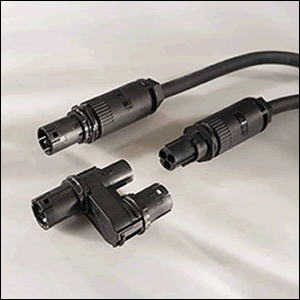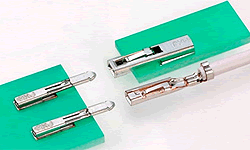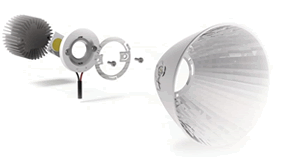Making Connections in LED Lighting
Considering connectors at the start of the design process results in an optimized LED lighting design.
LED lighting is very different from traditional lighting systems. Modern LED assemblies offer vastly improved power efficiency and longevity, and they can be extremely compact. However, their electronics are much more complex to design than those of incandescent light circuits as they must be driven with precise signals designed to maximize energy efficiency and control their temperature. LED lighting fixtures also have to be designed with thermal efficiency in mind to ensure the longest lifetime possible.
Where do connectors fit in? Well, they are a critical part of any circuit, but with LED lighting they can make a particularly big difference in the design’s success. Designers are often tempted to focus on the LED and how it is powered before addressing the rest of the components, but the right connector system is also critical. Consider connectivity options at the start of the development cycle to help avoid problems caused by lack of foresight, such as higher costs related to materials, assembly, and upkeep. Leaving the connectors until last means you may have to compromise on the product’s aesthetics, performance, or both.
Modern lighting connectors are designed especially for LED lighting systems and their demands. High-end lighting features, such as dimming, brightness control, and color change that depends on ambient light conditions, are becoming prevalent, so connector manufacturers are responding with specialized LED lighting connectors. This new breed of devices combines power, data, control, and communications functions and is gaining traction in smart building applications as well as offices, retail lighting, and other multi-luminaire applications.
TE Connectivity’s NECTOR S line (Figure 1) is a particular example of this type of product; it’s a compact power-to-luminaire connector that fits into an 8mm opening. It’s for applications that combine a power connection and coupling between lamps, such as intelligent lighting in smart buildings, but there’s also part of the range especially designed for lighting commercial/retail refrigerators and freezers.

Figure 1. TE Connectivity’s NECTOR S range
Specialized connectors are also required inside luminaires and light fittings. Apart from all the usual mechanical considerations, being low-profile is particularly important in lighting connectors because bulky components can cast unwanted shadows. For example, Molex’s TermiMate wire-to-board and board-to-board connectors (Figure 2) use a terminal-only system, with no housing, to ensure they can be placed as close to the LED module as possible without causing shadows. They are extremely low profile at 1.2mm high. These connectors are designed to offer an alternative to direct-wire soldering, which uses a weak solder joint and doesn’t allow for unmating.

Figure 2. Molex TermiMate wire-to-board and board-to-board connectors
Connector manufacturers are also addressing thermal management inside high-intensity LED systems. LEDs produce a lot of heat as part of normal operation, which must be managed carefully with heat sinks and fans since elevated operating temperatures cause rapid shortening of the LEDs’ lifetime. The resulting system of SMD LED module, circuit boards, optics, and heat sinks leave little room for connectors, so integrating everything can be a challenge.
One option for simplifying spotlight, downlight, and similar designs is to use a chip-on-board (COB) LED holder, which integrates mechanical, electrical, and thermal interconnectivity, which can save effort during the design process. These holders are specially designed to fit each LED module, and they are often solderless – that is, the LED module snaps into place so no special tools are required for assembly. As an example, TE Connectivity’s Lumawise Z50 LED holder (shown in Figure 3) fits the Sharp Mega Zenigata LED COB module, and it includes optimal connections between the LED module, its heat sink, and optics.

Figure 3. TE Connectivity’s Lumawise Z50 LED holder (from left: heat sink, LED module, LED holder, optic attachment ring, and optic reflector)
In summary, LED lighting is a challenging application for connectors, but manufacturers are responding to these challenges with a wide range of specially designed internal and external connectors. Here we’ve looked at connectors for controlling and powering lighting in smart buildings, tiny board-to-wire connectors that are extremely compact, and COB module holders which effectively bring the thermal, electrical, and optical parts of the system together, but there are many more types emerging as the industry matures. Connectors are a key part of every LED lighting system, and it’s wise to consider specialist interconnection technologies at the start of the design process to avoid being stuck with limited choices and, therefore, sub-optimal performance and excess cost further down the line.
Author Marco Eng is senior product manager, interconnect, at Avnet Abacus.




